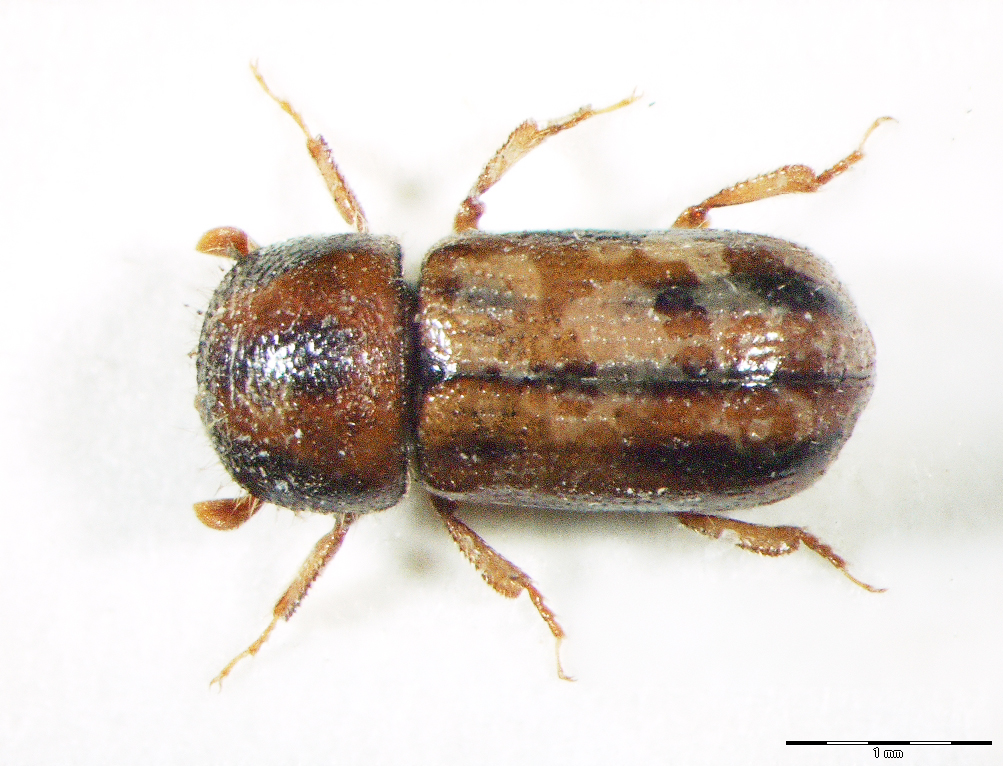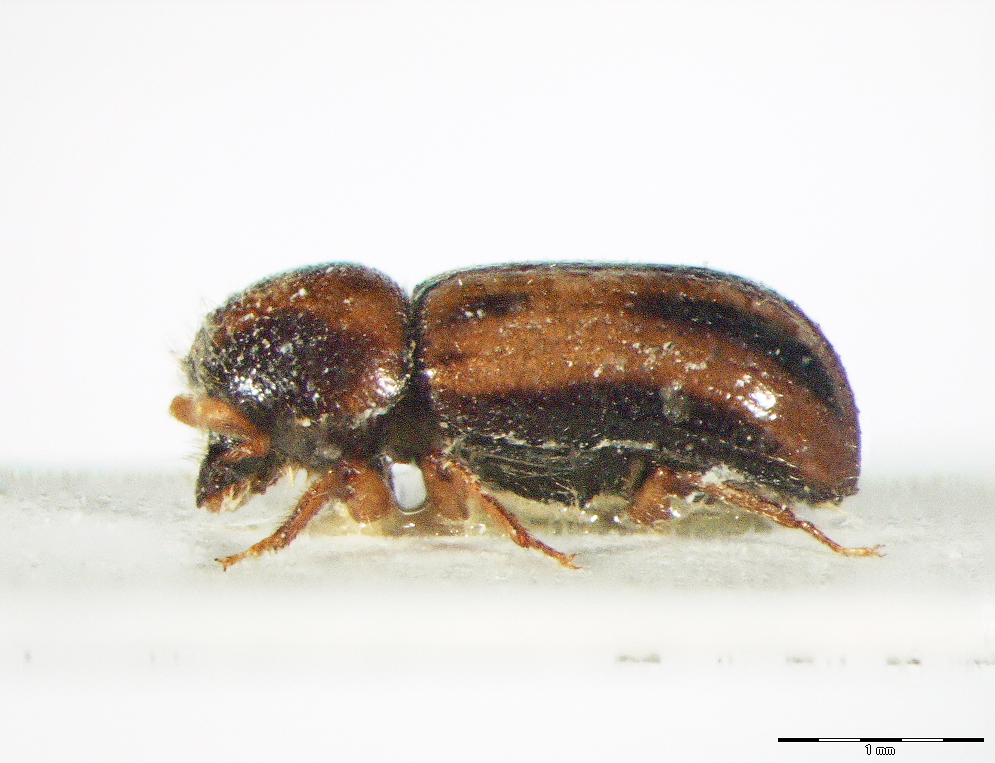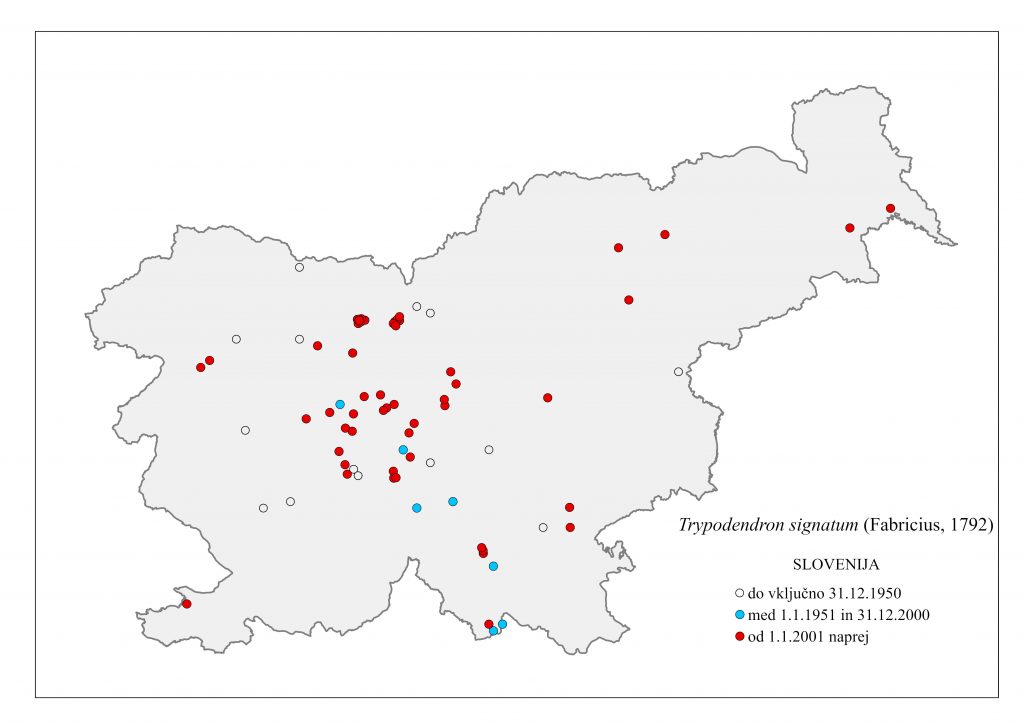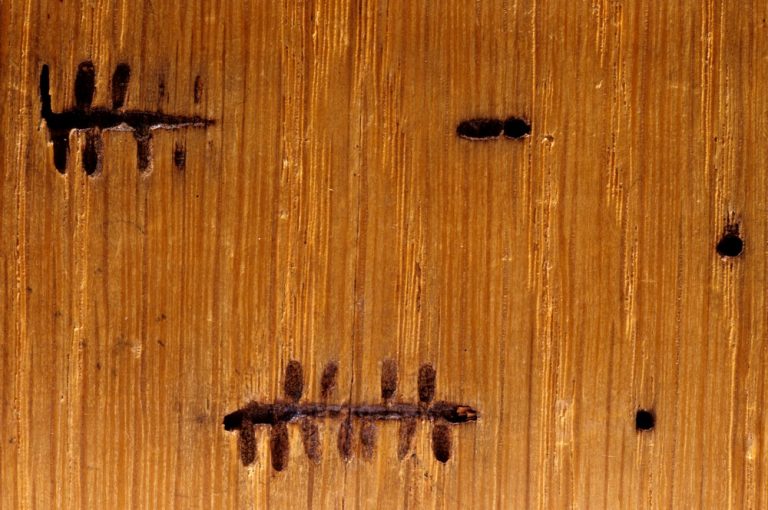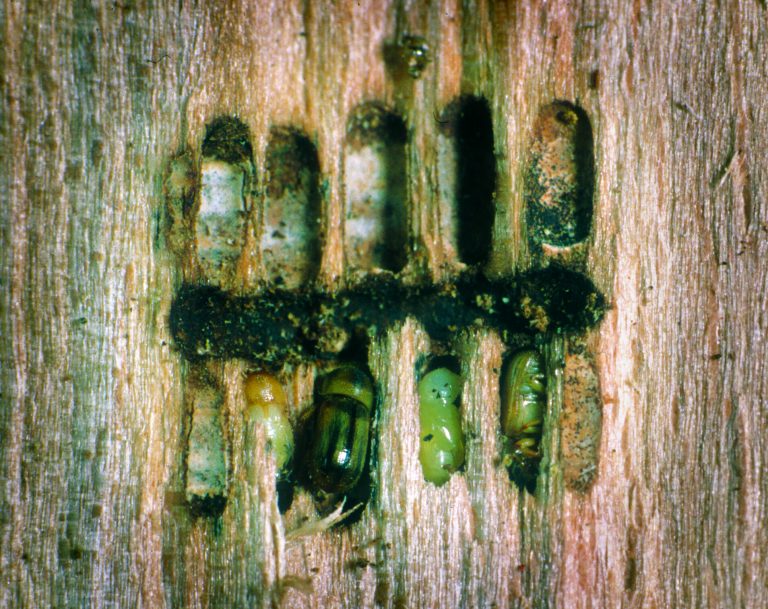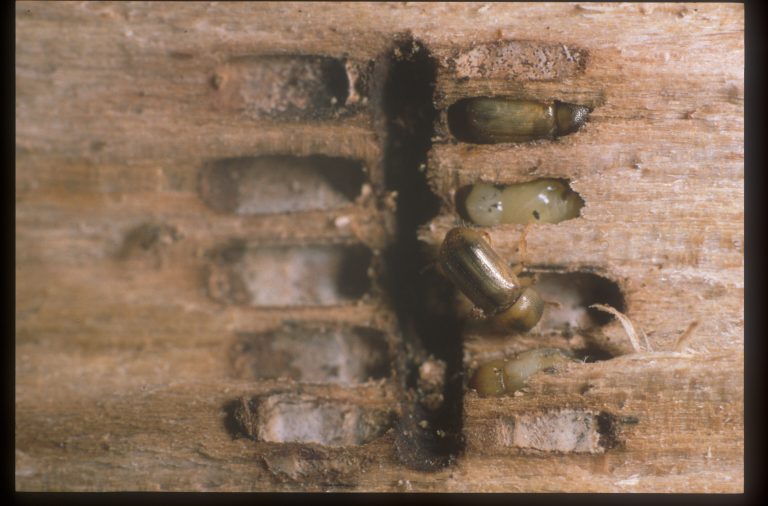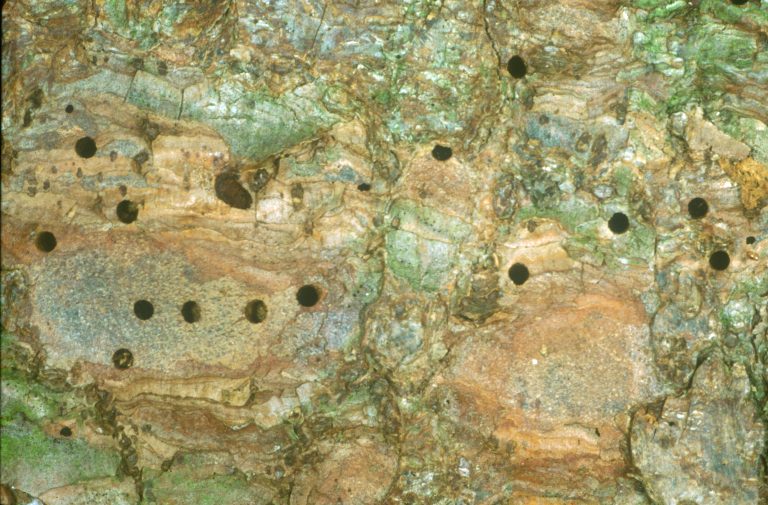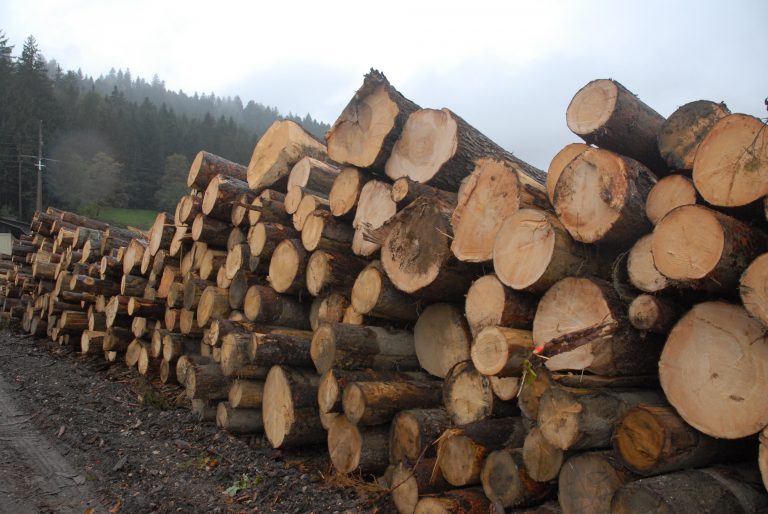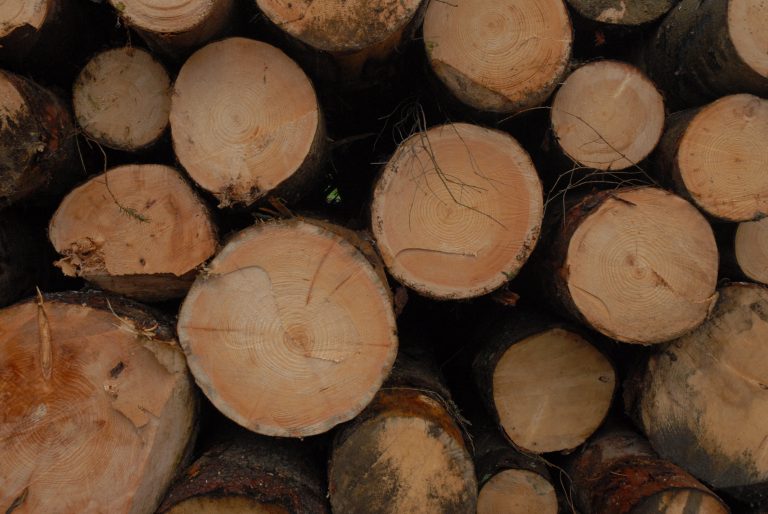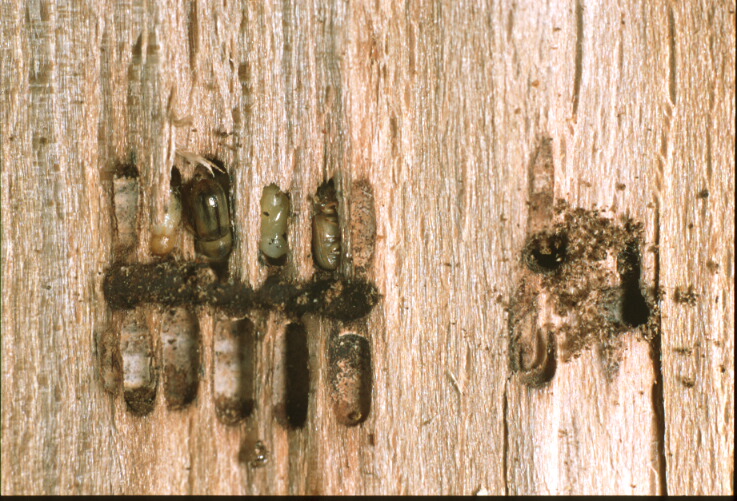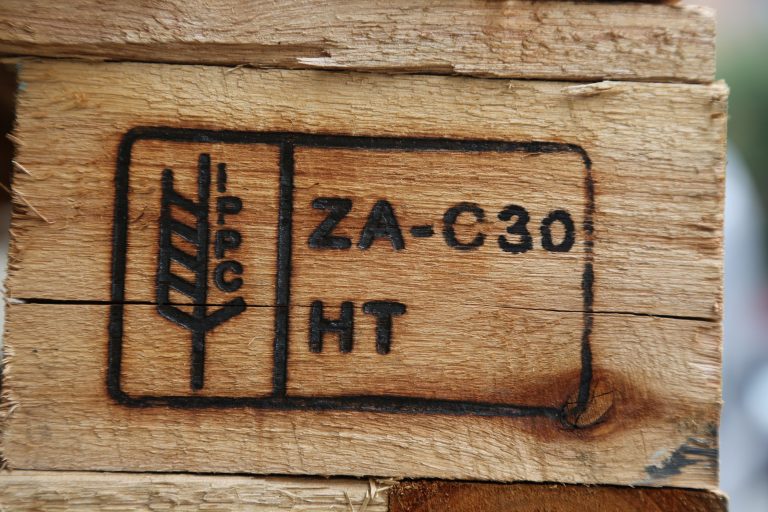39.04. Trypodendron signatum (Fabricius, 1792)
Presence
E: AB AU BE BU BY CR CT CZ DE EN FI FR GB GE GR HU IT LA LT MC NR NT PL SK SL SP ST SV SZ UK YU »Caucasus«
A: ES FE GAN HEI IN JA MG NC SC SCH TR WS YUN
Figure 189: Trypodendron signatum, dorsal, lateral (Photo: Maja Jurc)
Older catalogs and keys – citations of name
Grüne 1979: Trypodendron signatum (Fabricius, 1787); Freude, Harde, Lohse 1981: Trypodendron signatus Fabricius; Titovšek 1988: Xyloterus signatus (Fabricius); Pfeffer & Knížek 1993: Xyloterus signatus (Fabricius, 1787); Pfeffer 1995: X. signatus (Fabricius, 1787).
Figure 190: Trypodendron signatum, distribution map according to historical and recent data
Ecology and presence in Slovenia
The species is found in Europe and Asia. It is common in Slovenia, with records from all Slovene regions (Figure 190). X. signatus is a polyphagous species on deciduous trees. Hosts include Quercus petraea, Q. robur, Q. cerris, Fraxinus excelsior, F. ornus, Fagus sylvatica, Acer platanoides, Acer pseudoplatanus, Alnus glutinosa, Carpinus betulus, Betula verrucosa, B. pubescens, Populus sp., Tilia parvifolia, Corylus avellana, Robinia pseudoacacia, Sorbus aucuparia, S. torminalis and Ulmus spp.. In Slovenia, the species is common on Quercus robur and Q. petraea, rarer on Fagus sylvatica, with one record each on Alnus glutinosa and Ostrya carpinifolia. This xylomycetophagous monogamous vark beetle usually develops one generation per year, swarming in March and April. The elytra are covered in yellow and black longitudinal stripes, longitudinal punctation is coarse. On the antenna, the scape is almost rectangular on the inside. Inhabits only fresh wood, normal logs, logging debris and standing weakened trees. The tunnel is ladder-shaped, similar to that of T. domesticum. The length (adultus) is 3.5-4.0 mm. The elytra are covered in yellow and black longitudinal stripes, the longitudinal punctation is coarse. On the antenna, the scape is almost perpendicularly angular on the inner side (Figure 189). The species is highly secondary, causing technical damage to deciduous trees. In oak the damage is limited because the tunnel system is located in the outer layers of sapwood. Pheromone: 3-Hydroxy-3-mathylbutan-2-one (Francke et al. 1974).

